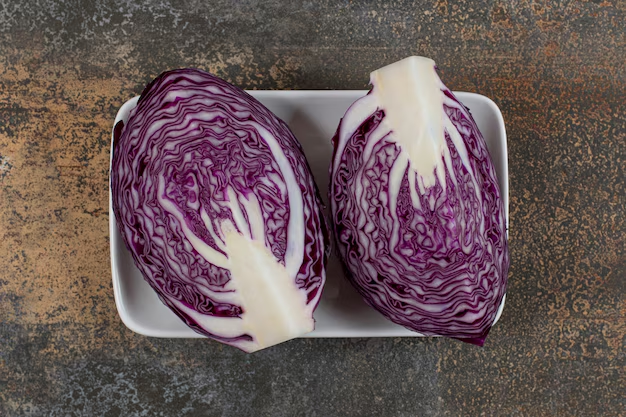How Long Can You Keep Cooked Cabbage Fresh in the Fridge?
Cooking up a storm in the kitchen often results in delicious leftovers that are convenient for future meals. Cooked cabbage is no exception, whether it's part of a comforting cabbage stew, a spicy curry, or simply sautéed as a side dish. But once you've cooked it, how long will it actually last in the refrigerator? This guide dives into the lifespan of cooked cabbage stored in a refrigerator and offers tips for extending its freshness, using up leftovers creatively, and understanding signs of spoilage. Let's ensure your cooked cabbage stays safe and tasty for as long as possible!
🥬 Understanding the Storage Longevity of Cooked Cabbage
How Long Does It Typically Last?
Generally, cooked cabbage can last in the refrigerator for about 3 to 5 days—a timeframe common to a wide range of cooked vegetables. This assumed duration ensures both quality and safety, as prolonged storage can lead to undesirable changes in flavor and texture, and even potentially harmful bacterial growth.
Factors Affecting Shelf Life
Storage Temperature: Maintaining a refrigerator temperature below 40°F (4°C) is crucial. Temperatures above this range can facilitate bacterial growth, shortening the shelf life.
Containment: Storing cooked cabbage in airtight containers helps to prevent moisture loss and contamination from other foods.
Initial Freshness: The fresher the cabbage at the initial cooking stage, the longer it tends to last post-preparation.
Key Tip
Use airtight glass or BPA-free plastic containers to store cooked cabbage in the fridge to maximize its lifespan and keep the flavors intact.
Practical Steps for Storing Cooked Cabbage
Correct Storage Techniques
Cool Before Storing: Allow cabbage to cool to room temperature before transferring it to the refrigerator; however, avoid leaving it out for more than two hours to prevent bacterial growth.
Utilize Proper Containers: Use shallow, airtight containers to allow for even cooling and minimal air exposure.
Avoid Overcrowding: Ensure there is ample space around the container in the fridge for air circulation, which helps maintain an even temperature.
Tips for Adding Disked Cabbage Flavor to Other Meals
Batches and Portions: Consider dividing cabbage into meal-sized portions prior to storing, making it easier to grab only what you need later on.
Label: Mark containers with the date they were prepared to keep track of their lifespan.
⏳ Recognizing When Cooked Cabbage Has Gone Bad
Signs to Watch For
Appearance: Discoloration or mold growth on the surface is a clear indication to discard.
Smell: A sour or off-putting odor suggests spoilage.
Texture: Moisture loss leading to a certain mushiness or sliminess is a red flag.
Safety First
When in doubt, throw it out! Eating spoiled food can lead to foodborne illnesses, which are best avoided through cautious consumption practices.
🌿 Creative Uses for Leftover Cooked Cabbage
Maximize on Leftovers with Delicious Ideas
Cabbage Soup: Mix cooked cabbage with stock, spices, and any other leftover veggies for a hearty soup.
Tacos and Wraps: Add cabbage to tacos or wraps for an extra bite of nutrition.
Stir-Fries: Incorporate it into a fresh stir-fry alongside other vegetables and proteins.
Cabbage Pancakes: Mix with eggs and flour to create savory pancakes—a spin on okonomiyaki.
Proper Freezing Techniques for Extended Preservation
Is Freezing an Option?
Yes, cooked cabbage can be frozen to prolong its shelf life beyond the refrigerator's limit.
How to Freeze Cabbage
Initial Cooling: Ensure cabbage is completely cooled.
Portion Control: Divide into appropriate portion sizes before packing.
Packaging: Use freezer bags or vacuum-sealed bags to minimize freezer burn and maintain freshness.
Freezing Duration: For best taste and texture, consume within 2 to 3 months after freezing.
📝 Summary & Key Takeaways
Here's a handy recap to help you keep your cooked cabbage fresh and delicious:
- Storage Duration: 🕒 3 to 5 days in the fridge, or freeze for up to 3 months.
- Optimal Containers: 🗳️ Use airtight containers for preservation.
- Cool Before Storing: 📉 Allow cabbage to cool down properly.
- Spoilage Signs: 👃 Look for bad odors, discoloration, and slimy texture.
- Freezing Tip: ❄️ Divide and seal portions to avoid freezer burn.
- Creative Use: 🌮 Incorporate into soups, wraps, and stir-fries to reduce waste.
By following these guidelines, you can savor every bite of your culinary creations while practicing responsible food storage. Proper handling not only maximizes safety but also enriches your dining experiences. Enjoy the flavorful possibilities that cooked cabbage brings to your table!
